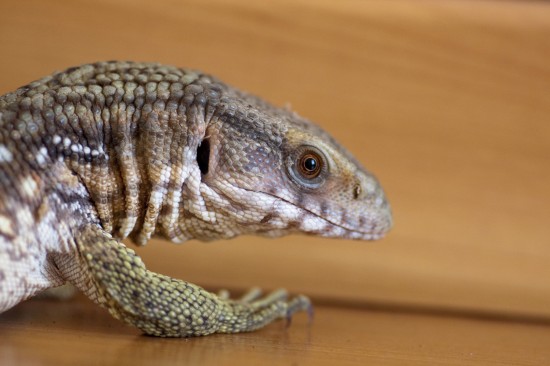

If you own a dog or like to keep your finger on the pulse when it comes to dogs and what’s new in the canine world, you will almost certainly already know about lungworm, and few veterinary clinics in the UK have failed to take steps to raise awareness of the condition, such as by putting up informative poster displays in the reception area.
Lungworm is a condition that has only become prevalent and recognised as a serious threat to dogs in the UK over the course of the last few years, and because the condition can be very acute and even fatal, it is important for all dog owners to become lungworm aware, and develop a basic understanding of the condition, and how to protect your dog.
Lungworm awareness is important, and word of the condition and how to stay vigilant to it is something that everyone associated with dogs should get on board with-and in order to assist with this, Bayer Animal Health have actually produced a regional map of lungworm hotspots, in order to allow dog owners to stay informed and up to date about the condition’s progression in different areas of the country in real time.
In this article, we will cover the basics of lungworm and what it does to dogs, and also, how to find out whether or not you and your dog live in or near a lungworm hotspot-and why this information is important. Read on to learn more.
Lungworm is technically a parasite, which can infest dogs and some wild animals too, such as foxes. Only the adult lungworms actually infest mammals, and the parasite itself goes through the egg and larvae stages in snails and slugs.
Up until a few years ago, lungworm was virtually unheard of in the UK, and so, is classed as an emerging disease-one that is becoming ever-more prevalent in the UK, and is likely to reach a peak as it spreads ever more widely.
As the condition is being spread more and more widely, clusters of presentations of the condition are becoming easier to identify, leading to the lungworm hotspot map’s creation. Lungworm spreads as animals like dogs and foxes that can carry the parasite move around the country, and it is thought that potentially, other parasites such as fleas and ticks may potentially spread the condition too.
Lungworm resides in the lungs of affected dogs, which also means that general multi-purpose intestinal wormers will not prevent or treat an infestation. Dogs infected with lungworm will display symptoms such as respiratory distress and coughing, which can be reasonably fast in onset. Over time, weight loss, loss of appetite and loss of condition will also accompany the condition’s progression, and lungworm can ultimately prove fatal in dogs if left untreated.
At the egg and larvae stage of the lifecycle, the lungworm parasite itself infests slugs and snails, and the parasite needs to make the jump to a mammalian host like a dog or a fox in order to progress to adulthood.
Usually, this occurs when infected slugs or snails leave larvae behind when they move, which is then ingested by a dog that themselves becomes infected, giving the parasite the chance to grow to maturity.
This can happen if your dog’s toys are left outside when they are not playing with them, and slugs and snails move over the toys, leaving behind eggs or larvae when your dog next picks up the toy.
However, dogs can also ingest lungworm without needing to pick up toys, by picking up sticks, eating grass, or licking their coat after rolling in the grass, or even actually eating snails or slugs, as well as by various means of transmission.
The UK map of lungworm hotspots is an interactive map that allows people who search it to input their postcode and view logged cases of lungworm within a set distance from their home, which allows the dog owner to monitor the prevalence and development of lungworm cases in their area. It can also help to tell you about areas to avoid when walking your dog too.
As the condition is still in the emergent disease stage, it is becoming ever more widely spread across the country, and so, poses a risk to ever-more dogs, while in the early days of lungworm’s spread, it was localised to the southern parts of the country.
It is wise to be vigilant to the risk of lungworm wherever you live, as the condition is spreading more and more widely rather than becoming better contained.
Knowing whether or not you live in a lungworm hotspot can help in terms of assisting you in remaining vigilant and taking extra care to reduce the chances of transmission to your dog, and of course, so that you can remain vigilant to the potential symptoms.
If your dog does appear to be displaying the symptoms of lungworm, the sooner that you take them to the vet and seek treatment, the better the chances of your dog’s ultimate survival will be.
 The Challenges Of Mating And Labour In The French Bulldog
The Challenges Of
The Challenges Of Mating And Labour In The French Bulldog
The Challenges Of
 Dogs And Their Memories
Dogs And Their Me
Dogs And Their Memories
Dogs And Their Me
 Responsible Breeding - Some Common-sense Guidelines For Both Breeders And Puppy Buyers
Responsible Breed
Responsible Breeding - Some Common-sense Guidelines For Both Breeders And Puppy Buyers
Responsible Breed
 Keeping A Monitor Lizard
Keeping A Monitor
Keeping A Monitor Lizard
Keeping A Monitor
 Bull terrier puppies – your best canine companions
Bull terrier puppies – your best canine companions
Bull terrier puppies – your best canine companions
Bull terrier puppies – your best canine companions
Copyright © 2005-2016 Pet Information All Rights Reserved
Contact us: www162date@outlook.com